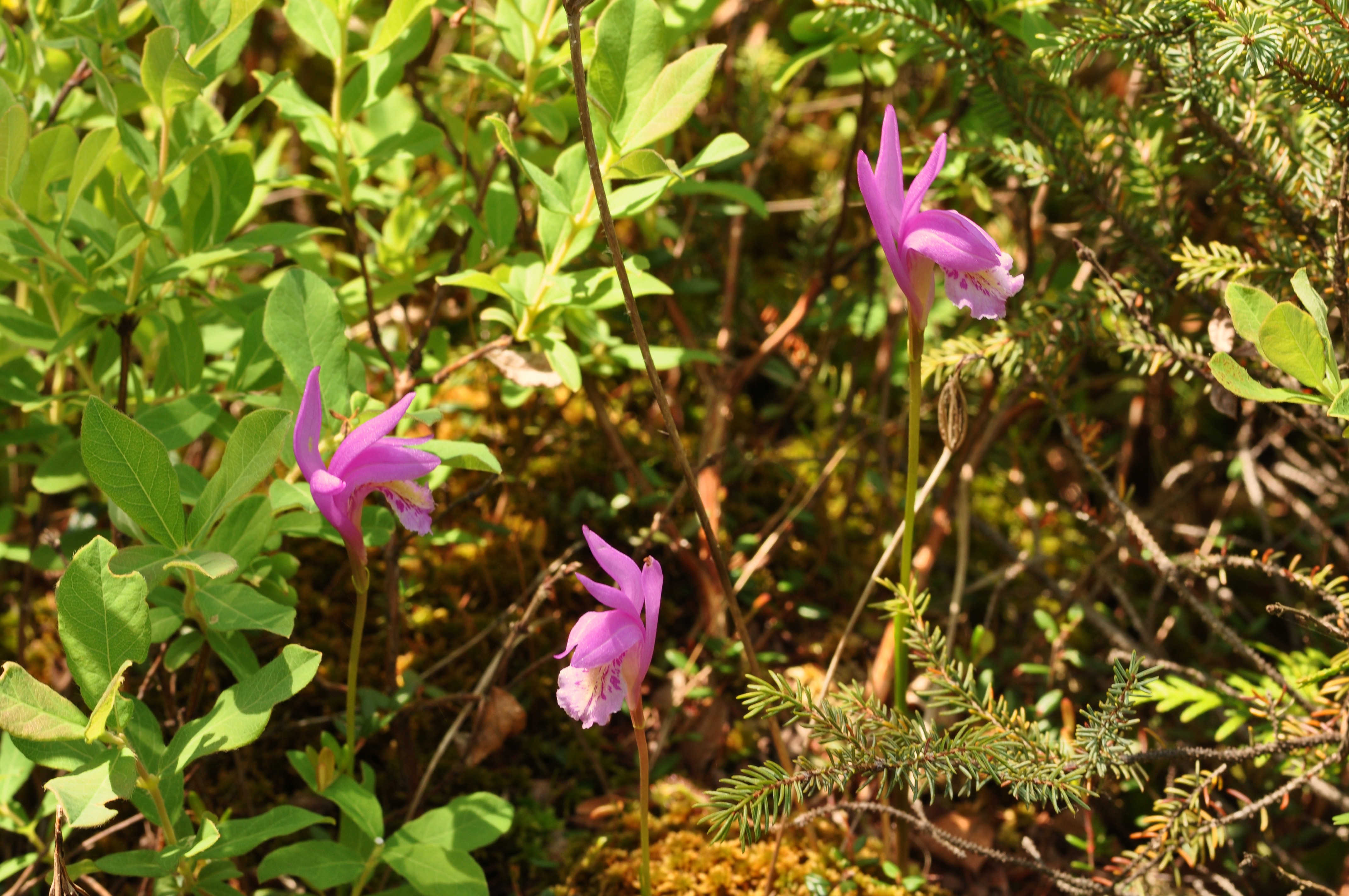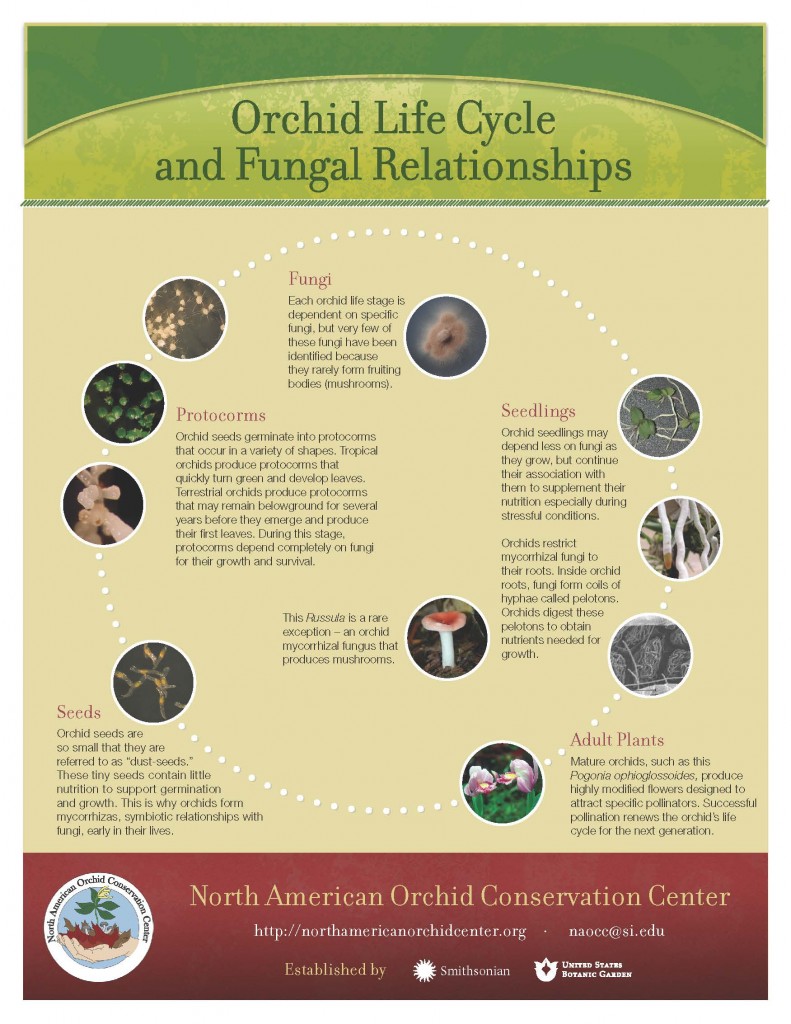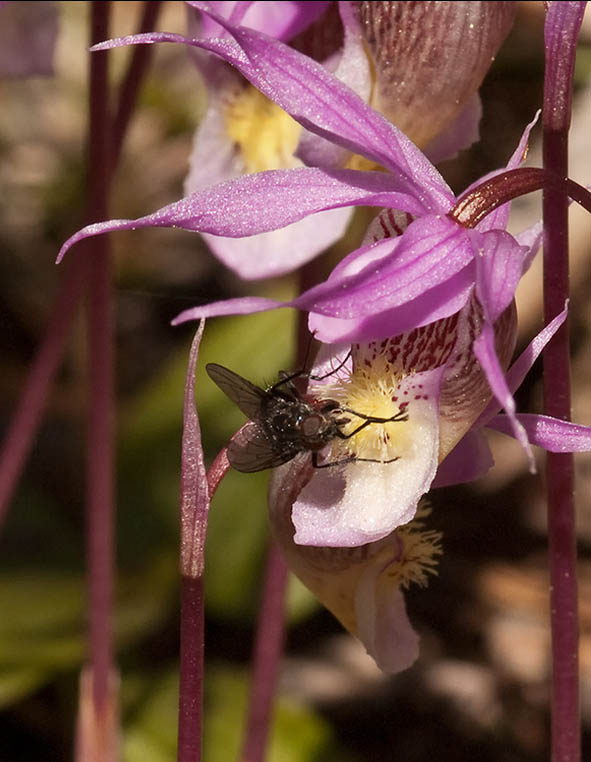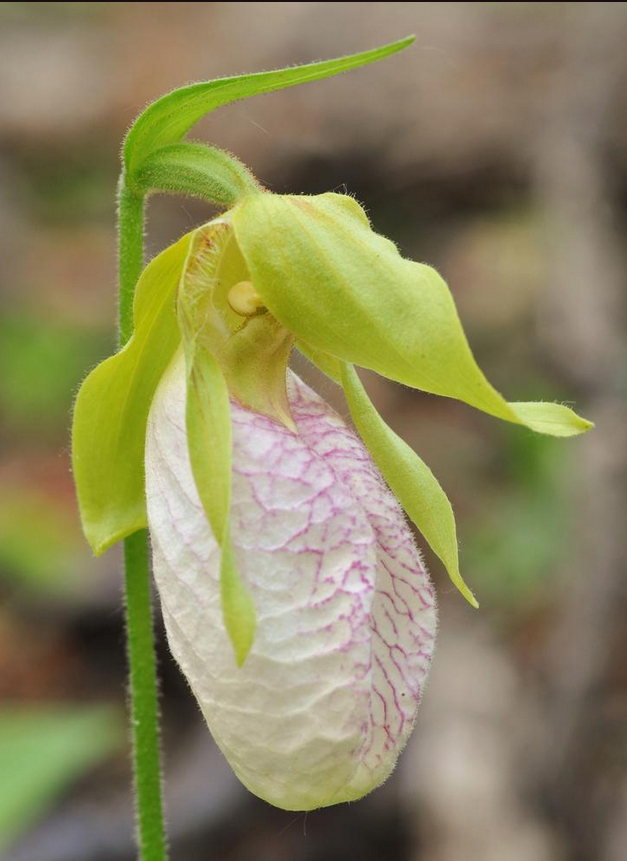by Heather Soulen
Orchids are cunning little creatures. They create elaborate ruses to puzzle insects, fungi and even (or especially) biologists. Here are a few poems we composed to honor the smartest plants on Earth.
Twinkle Orchid
Twinkle, twinkle, little orchid
Let’s get mycorrhiza sorted
Roots with fungus help supply
Sugar and nutrients to make you spry
Twinkle, twinkle, little orchid
Let’s get mycorrhiza sorted
Backstory:
A mycorrhiza is a kind of fungus that grows on orchid roots. In this relationship, the orchid receives water, sugar and nutrients from fungus, and the fungus receives nearly nothing in return. Check out this orchid life cycle poster for more details:
Orchids are pretty smart
Insect plans they thwart
The flowers they enter
Lead to no nectar
Seduced they play the part
Backstory:
There are three well known North America orchids that deceive pollinators: the Dragon’s Mouth Orchid, Fairy Slipper Orchid and the Large Whorled Pogonia Orchid. How do orchids deceive pollinators? By not offering pollinators a reward.
In the larger orchid world, deception includes:
- Simulation of a food reward (e.g. nectar and pollen)
- Mimicry of rewarding flowers (e.g. flower color and shape)
- Sexual deception (e.g. orchid flower/part of a flower looks like pollinator species; orchid produces pollinators scent)
In an evolutionary context, you wouldn’t think that this kind of deception would pay off in the long run, since non-rewarding flowers usually experience fewer pollinators and can lead to fewer successful pollination events and less viable seeds. Yet pollinator deception still exists and it wouldn’t exist if there wasn’t some sort of evolutionary advantages for deception.
The Dragon’s Mouth, Fairy Slipper and Large Whorled Pogonia orchids all deceive their pollinators by offering no food reward. Naïve bees often get the short end of the stick when it comes to these three orchids. Naïve bees are bees that are newly hatched, “forgetful,” or new to the area, moving from an exhausted food source to a new food source area and not quite wise to the ways of their new world. In their attempts to find nectar, naïve bees get “frustrated” and leave the flower. As they exit the flower, pollinaria, or pollen sacs, are deposited on the naïve bees and transported to the next flower for pollination.
Tricksy Orchidses
Orchids are really quite clever
The paradox does bewilder
Since dormancy
Seems backwardly
Bet-hedging might be the answer
Backstory:
This has been a longstanding head scratcher – why do some orchids undergo periods of vegetative dormancy? During vegetative dormancy, orchids lie low as rootstock, never producing stems or leaves for photosynthesis. And while the mechanisms for how dormant orchids obtain energy are poorly understood, it’s been suggested that orchids continue to exist by using resource reserves or mycorrhizal fungi. Some individuals of the Pink Lady’s Slipper were found to stay dormant more than 20 years! The paradox is why would a species go without sprouting and growing to maturity, and reproducing?
One hypothesis is that they’re hedging their bets by not growing and producing non-viable seeds during times of harsh environmental conditions. Growth and reproduction are expensive endeavors that could prove costly in the short and/or long term. Vegetative dormancy provides a way for orchids to delay or reduce this physiological uphill battle.
Vegetative dormancy is a clever adaptive trait that allows orchids to wait until environmental conditions are favorable or to protect energy invested in growth. Studying vegetative dormancy could help us understand how orchids and other plant species may fair during climate change. This adaptive trait might just be one of the golden tickets that helps prevent orchid extinction.
Orchids are clever plants, but they’re also in peril. Of the 200-plus native orchids in North America, more than half are threatened or endangered somewhere in their native range. Visit the North American Orchid Conservation Center online to learn more about these fascinating plants, and how you can join the fight to preserve them.





